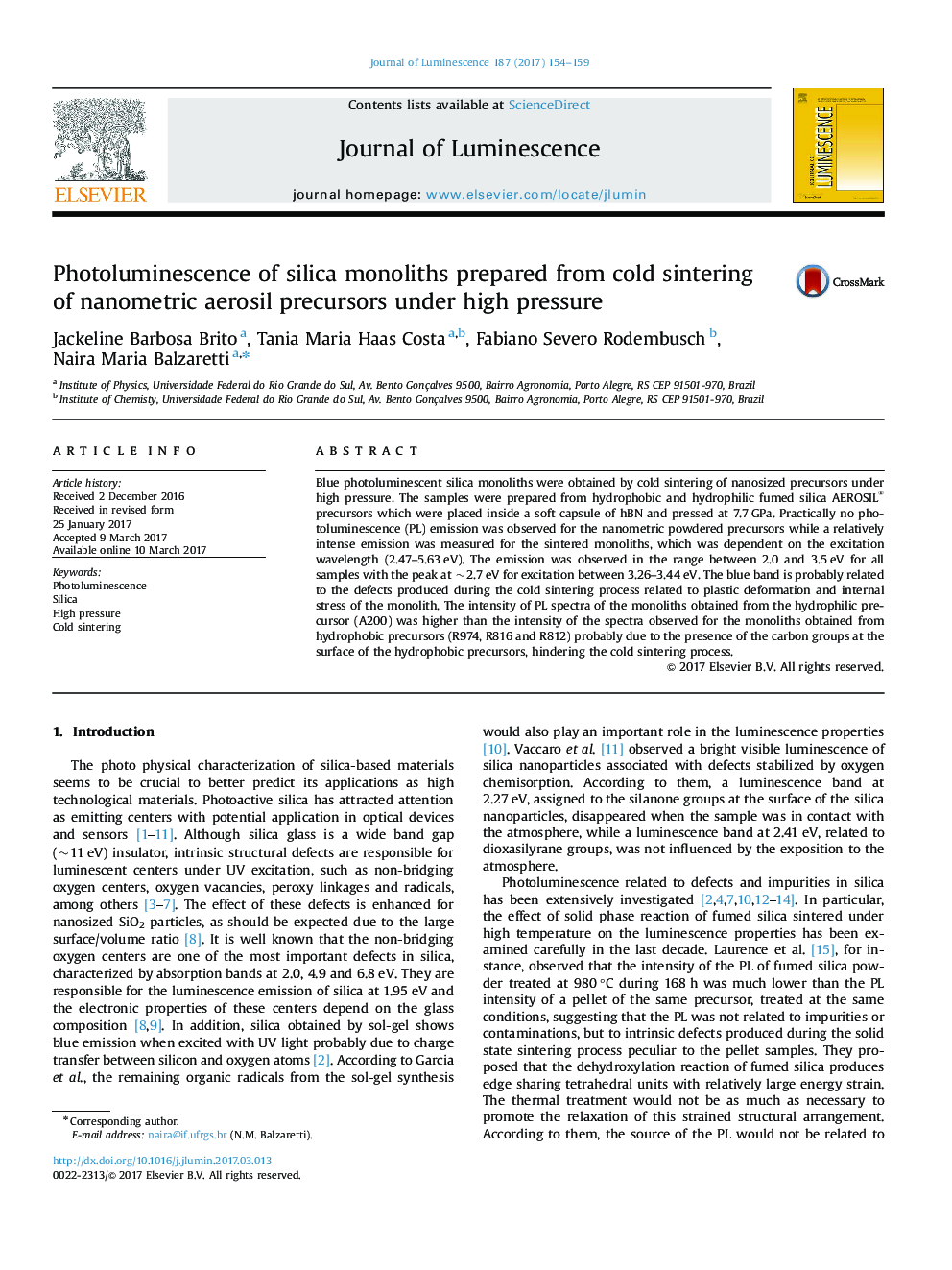| Article ID | Journal | Published Year | Pages | File Type |
|---|---|---|---|---|
| 5397891 | Journal of Luminescence | 2017 | 6 Pages |
Abstract
Blue photoluminescent silica monoliths were obtained by cold sintering of nanosized precursors under high pressure. The samples were prepared from hydrophobic and hydrophilic fumed silica AEROSIL® precursors which were placed inside a soft capsule of hBN and pressed at 7.7Â GPa. Practically no photoluminescence (PL) emission was observed for the nanometric powdered precursors while a relatively intense emission was measured for the sintered monoliths, which was dependent on the excitation wavelength (2.47-5.63Â eV). The emission was observed in the range between 2.0 and 3.5Â eV for all samples with the peak at ~2.7Â eV for excitation between 3.26-3.44Â eV. The blue band is probably related to the defects produced during the cold sintering process related to plastic deformation and internal stress of the monolith. The intensity of PL spectra of the monoliths obtained from the hydrophilic precursor (A200) was higher than the intensity of the spectra observed for the monoliths obtained from hydrophobic precursors (R974, R816 and R812) probably due to the presence of the carbon groups at the surface of the hydrophobic precursors, hindering the cold sintering process.
Related Topics
Physical Sciences and Engineering
Chemistry
Physical and Theoretical Chemistry
Authors
Jackeline Barbosa Brito, Tania Maria Haas Costa, Fabiano Severo Rodembusch, Naira Maria Balzaretti,
